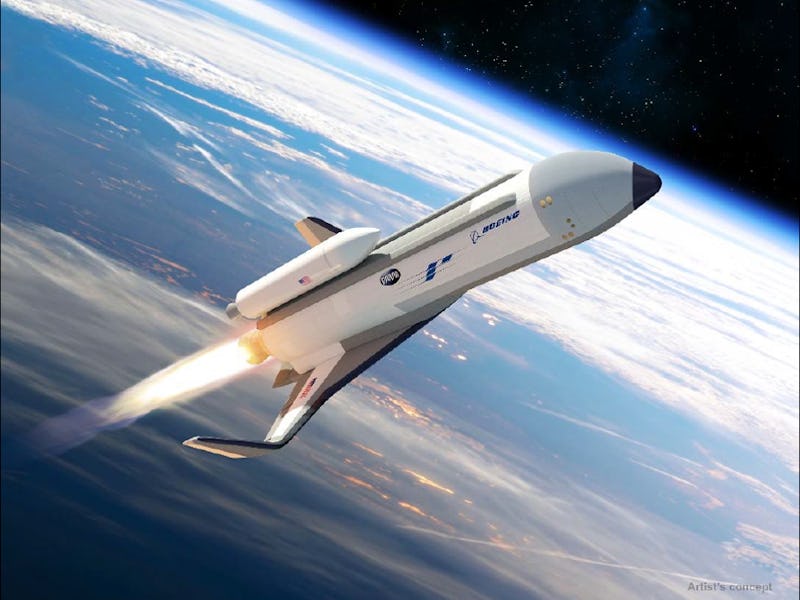DARPA's XS-1 Spaceplane Will Launch Spy Satellites on the Fly
Is a hypersonic rocket that costs only $5 million to launch too good to be true?

On Wednesday, DARPA announced it was moving forward in a partnership with Boeing to create and test a prototype of the agency’s proposed Experimental Spaceplane (XS-1) program, which aims to build hypersonic aircraft capable of sending unmanned, reusable vehicles into space for cheap. DARPA calls the XS-1 a “new class of hypersonic aircraft that would bolster national security” by facilitating an ultra-fast, ultra-cheap system of delivering payloads to orbit.
What kind of payloads are we talking about? Probably spy satellites, launched on the fly in order to quickly collect essential intel for national security purposes. In an ideal scenario, the XS-1 would be capable of going back and forth into space once or twice a day.
Imagine that: a future where the U.S. military could fire a spy satellite into space nearly every day. And with President Donald Trump being bullish on the potential to militarize space, the XS-1 would likely pave a path for allowing the delivery of weapons into space for all kinds of operations.
“The XS-1 would be neither a traditional airplane nor a conventional launch vehicle but rather a combination of the two, with the goal of lowering launch costs by a factor of ten and replacing today’s frustratingly long wait time with launch on demand,” Jess Sponable, DARPA’s program manager, said in the announcement. “We’re very pleased with Boeing’s progress on the XS-1 through Phase 1 of the program and look forward to continuing our close collaboration in this newly funded progression to Phases 2 and 3 — fabrication and flight.”
Here’s how it works: the XS-1, basically the size of a business jet, would take off vertically like a rocket headed for space:
Blast off.
It would reach hypersonic speeds (Mach 5 or higher), and fly into orbit using cryogenic propellants. The booster would separate from the expendable upper stage in suborbital altitude:
Separate!
Then the upper-stage would be able to deploy payloads of up to 3,000 pounds into orbit:
Satellite deployed.
Meanwhile, the first stage returns to the Earth…
The return.
It would land horizontally like the old NASA Space Shuttles used to:
Skerrt!
After a few hours, the XS-1 would be ready to fly again.
DARPA and Boeing want to reach a point where they can test a prototype of the XS-1 technology with 10 flights over the course of 10 days, with an additional final flight that actually delivers a payload into orbit. The goal is for each flight to cost as little as $5 million per launch.
DARPA’s latest announcement is a concerted push to make that a reality. To get there, the XS-1 program will need to prove the practicality and viability of the constituent technologies that will make XS-1 possible. Those technologies include lightweight cryogenic propellant tanks capable of storing liquid oxygen and hydrogen, metallic wings capable of withstanding spaceflight stressors (like temperatures reaching over 2,000 degrees Fahrenheit), and an automated mission abort system.
The agency is looking to begin a ground engine demonstration by 2019, and for 12 to 15 flight tests in 2020. After those shakedown flights, XS-1 would try to pull off the “10 tests in 10 days” milestone, with subsequent flights to test out the potential for the architecture to fly as fast as Mach 10.